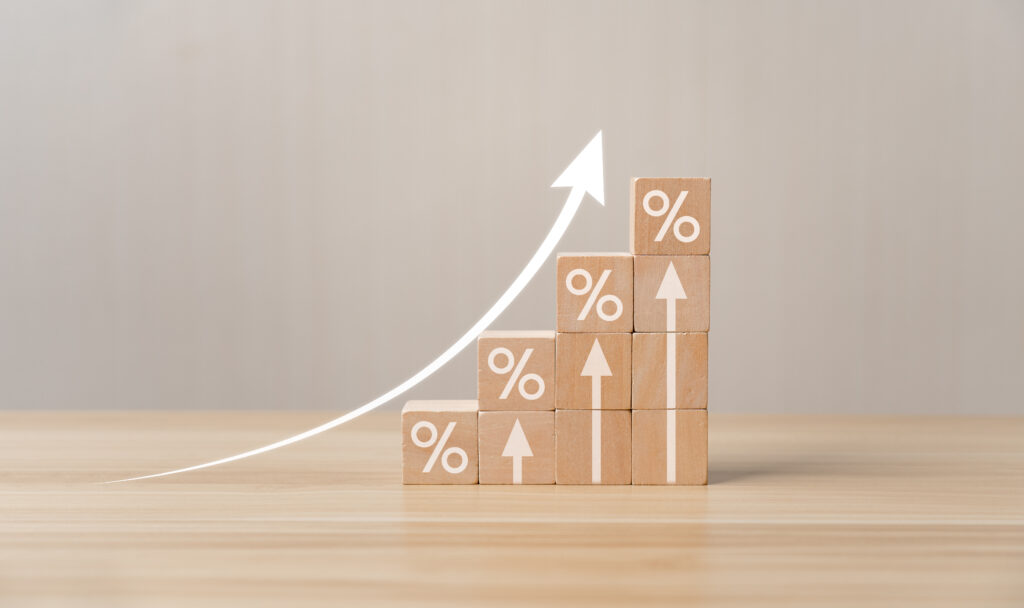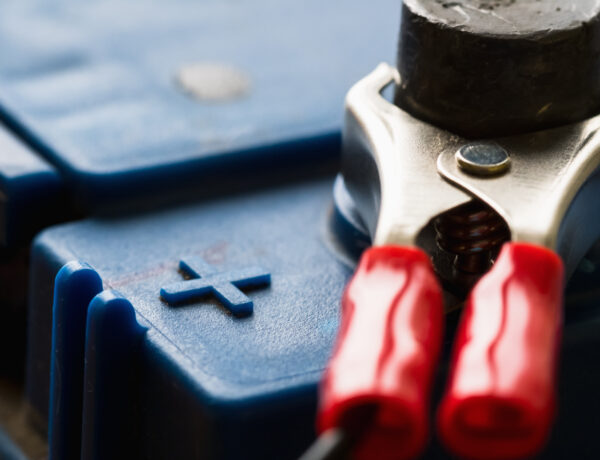Is there a best time to buy car?
Car shopping can sometimes feel more like you’re playing a game than making a straightforward purchase. A car might have one price in May and a completely different price in October. At some dealerships, the price may even change from a Sunday to a Monday. It makes you start to wonder: who makes up these rules?
What’s wrong with the question “Is there a best time to buy a car”?
When asking the question, “Is there a best time to buy a car?” it’s important to break down one tricky little phrase that sits right in the middle of the query: best time.
In the world of car purchases, it’s much more advantageous to ask which times are the best for purchasing a car because there isn’t just one time that’s best.
The question also presents a superlative: “best.” This seems pretty straightforward, but if you talk to automotive experts, you may hear about all the intricacies of car dealership quotas. Because there are so many factors that make pricing differ between dealerships in different places at different times, these experts will likely tell you that it’s best to talk in terms of “better times to buy” than a “best time.”
The remainder of this article will explain how to buy a car at better rather than worse times. It will also provide strategies for taking advantage of the better times to buy a car. And near the end, you’ll get some advice about how to take advantage of car deals in case you are considering buying a car in the near future.
Factors that affect the best time to buy a car
Here are some factors that can help you decide when the best time to buy a car is for your circumstances:
Seasonal sales
You can take note of car dealership sales to try to get a better deal. Here are common sales you can take advantage of:
End-of-year sales
Dealerships think in terms of quotas, and quotas come in weekly, monthly, and yearly cycles. At the end of the year, basically from October to December, all those cycles start overlapping, and dealerships make serious efforts to meet them. In addition to offering Black Friday car deals, dealerships often spend the end of the year discounting their stock of old model-year vehicles. For potential buyers, you can think of these as the equivalent of clearance sales. Everything has got to go.
Summer sales
With Memorial Day, Fourth of July, and Labor Day all happening in a short span of time, there are lots of reasons to promote a sale. But the hottest months can also be the hottest times to buy a car. Summer is typically when the dealerships are busiest. So if you want to score that hot summer sale deal, be prepared to deal with a sweaty summertime crowd.
Incentives
Incentives are used by manufacturers, dealers, and even governments to get people to buy certain cars. Incentives will differ depending on the manufacturer, a dealership’s inventory, the time of year, and even the type of car, but they can add steep discounts to the purchase price of a new vehicle.
New model rollouts
When a manufacturer is about to release a new model, they’ll want space on a dealership floor to display that model. That puts the pressure on dealerships to clear out all the old model year versions, which can lead to big discounts off MSRP. Sure, your purchase won’t be the newest of the new cars, but it’ll likely be a bargain.
Dealer incentives
When manufacturers want dealers to move specific models, they sometimes offer dealer incentives. This basically means they lower the cost for the dealer to purchase specific vehicles from the manufacturer in exchange for meeting certain goals. Dealer incentives are typically offered on a regional basis and can create competition among dealers to sell more cars. And competition for them could mean discounts for you.
Customer incentives
If the dealer has a specific vehicle they want to move off their lot, they might also offer their own incentives. These incentives come in many forms: cash-back rebates, special leases, and low-interest financing. Even the government is getting in on the customer incentive game, offering tax rebates for fuel-efficient vehicles. Taking advantage of customer incentives can help you save money on a vehicle purchase over the short and long term, depending on the type of incentive.
Economic trends
It’s important to pay attention to economic trends prior to making major purchases, including a car purchase. Gone are the days when Google was sought out to ask “will car prices drop in 2022?” Instead, these days you’ve got to buckle down and do your research. It can help you understand car prices in terms of the following three major economic trends.
Interest rates

These days, interest rates are on the rise, and though they’ve slowed a bit, don’t expect them to go back to 2020 levels any time soon. Factoring in an interest rate you can expect to receive from a bank when you go to purchase a car is a must for any potential buyer. And if you’re thinking of a car purchase further in the future, it’s best to anticipate rates that are higher than what they are today.
Consumer confidence
Confidence is key. This is true in many situations, especially in the case of retail pricing. When consumers are confident that they will be able to continue to spend at their normal levels, manufacturers and retailers have little incentive to reduce prices. However, when consumers start to lose confidence in the market, businesses like car dealerships will need to seek out ways to get people to buy their products — including discounts and sales. Otherwise, their profits may fall.
Inventory availability
For dealers, inventory numbers are their guiding light when it comes to setting prices. If they’re stuck with too many units of a particular model, they are likely incentivized to reduce their profit on that unit so they can get it out of their inventory. If their inventory is very low — as was the case for many dealerships during the chip shortage and its subsequent impact on vehicle manufacturing — and demand remains steady, they are less incentivized to cut prices.
How to take advantage of the best time to buy a car
Now you’re equipped with all sorts of knowledge about factors that can affect car pricing, but how do you use that knowledge to get a good deal on a car? If you’re gearing up to make a car purchase, here are some areas where you can apply your recently acquired expertise.
Research and preparation
- Comparison shop: It never hurts to shop around, and the internet makes it easier than ever. If you’ve got a particular make and model of vehicle you’re looking to buy, it’s a good strategy to look up the MSRP and then pay a visit to a few of your local dealerships to see what kind of pricing they’re offering on that vehicle.
- Know your budget: There are plenty of costs to car ownership beyond the sticker price. Tax, interest rates, extended warranties, and other add-ons can add to the cost of a vehicle. Go into the dealership with a firm idea of the maximum amount you want to spend as well as the maximum monthly payment you can afford.
- Understand the financing: Whether you get your loan from a bank or the dealership, make sure you understand the terms used when financing a vehicle. Knowing what terms like credit scores, loan terms, APRs, DTI ratios, and leases mean will put you in a better position to work with the dealer to get the best deal on your car.
Negotiating
-
Understand dealership pricing strategies: When you understand how dealer inventory, quotas, and incentives combine to impact pricing decisions, you’ll be in a better position to negotiate with your chosen dealer on the price of your vehicle. Once you’ve decided where to purchase from, it’s beneficial to spend some time monitoring that dealership’s inventory and promotional sales to get a sense of what vehicles they might be more inclined to discount.
-
Research dealer incentives and discounts: When comparison shopping, check out your local dealership’s websites for any promotional materials about incentives or discounts. You could also call around and ask about dealer-specific promotions. This may be a useful bargaining chip if you’re deciding between purchasing a vehicle from two different dealerships.
-
Pay attention to the inventory: Some cars have waiting lists that are years long. It’s unreasonable to expect you can get a deal on a car that is in high demand and flying off dealerships’ lots. But if you’re open to purchasing a vehicle that is in less demand and higher supply at a dealership, you might put yourself in a better position to negotiate on the price.
Timing your purchase
- Monitoring sales and promotions: In addition to timing your shopping around holiday sales and end-of-year deals, keep an eye out for local promotions. Dealers in certain regions may be incentivized by their manufacturer to move a specific product during particular periods when seasonal sales aren’t happening.
- Waiting for the best deal: Though it may be frustrating, playing the waiting game is often a good strategy. As model years age, it’s more likely that they will be discounted. To find out when new inventory might be arriving at your local dealership, try searching “when do 2023 cars come out” to better time purchase for the make and model you want.
Other considerations when buying a car
Knowing the best time to buy a car is one part of the intricate calculus of purchasing a vehicle. There are other things to consider besides when you want to go shopping. Here are some additional important factors that may impact your decision about if and when to purchase a new vehicle.
Depreciation
Depreciation, put simply, is the rate at which your purchased vehicle will lose value over time. It’s rarely the case that you’ll purchase a car and see it rise in value. Still, there are steps you can take to ensure your rate of depreciation remains low.
It’s a good idea to look up the depreciation values of various vehicles before purchasing. Once you purchase a car, doing things like refraining from making significant modifications, keeping the mileage low, and staying up to date on your maintenance schedule will also help limit depreciation.
Maintenance and repair costs
While death and taxes may be inevitable in general, in the world of automobiles, maintenance and repair costs are the one thing you can count on no matter what you buy. It might be useful to look up the average cost for recommended maintenance services like brake and oil changes to see if these services fit into your yearly budget. You might also want to look at the cost of common repairs like replacing catalytic converters, ignition coils, and spark plugs, and thermostats to know if these will be expenses you can afford, if necessary.
Insurance costs
Nearly every state in the U.S. maintains minimum car insurance requirements, and car insurance is something that you need to factor into your monthly or yearly budget when determining whether you want to buy (and can afford) a new car. To determine what your insurance bill might be, many insurance companies offer insurance calculators to get an idea of your rate before purchasing a policy.
Gas mileage
In addition to car prices and interest rates, the cost of gas is something the world has seen skyrocket in recent years. To understand how much gas mileage will add to your monthly costs, estimate how much you will drive your car every month, divide that number by the estimated miles per gallon fuel efficiency rating of the car you want to buy, and then multiply that number by the average price for a gallon of gas in your area.
Recapping factors that affect the best time to buy a car
Technically, there is no single best time to buy a car. But there are several times of the year that are typically better than others. It’s a good idea to start your car hunt near the end of the year when dealerships are itching to meet their snowballing weekly, monthly, and yearly quotas. Holiday sales events are also good times to check out vehicle pricing.
If you really want to get into the weeds on some dealership research and snooping, pay attention to their inventory and the promotions they advertise. That may give you a sense of which cars they’re trying to get rid of and which cars they can’t keep their hands on. You can also ask around about customer incentives various dealers might be offering, which could help you lower the sticker price or the long-term cost of purchasing a car.
Final thoughts
Buying a car can be complicated, and doing it well can involve a ton of research and negotiating-savvy. If this sounds exhausting to you, you’re not alone.
If the effort of purchasing a vehicle or the obligation of owning one is not appealing to you right now, Flexcar is happy to inform you that there are other (much easier) ways of obtaining a vehicle for personal use. Flexcar’s car subscription service could be just the option you’re looking for.
With Flexcar’s no-hassle subscription plans, you can gain access to wheels for as little or as long as you need. We have a large inventory of recently manufactured vehicles to choose from, and you’re free to swap vehicles as often as you’d like. Best yet, all Flexcar’s subscription plans include insurance, maintenance, and roadside assistance, so you don’t need to expand your budget to account for those costs. They’re already factored into the price.
Flexcar can even serve as part of your car purchasing process. If there’s a particular make and model you’re considering buying, it could be a good idea to give it a test run with Flexcar before you decide you want to make the full commitment to purchase. And no matter what you choose, Flexcar will be here to help explain all the complicated ins and outs of the automotive world in a friendly and accessible way.





